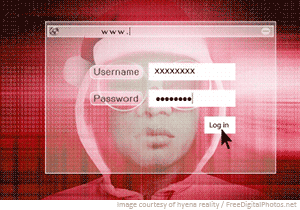
The holiday season is a great time for family, friends and fun – but it is also a time for fraud. If we let down our guard, fraudsters can turn happy times to sad. According to the Association of Certified Fraud Examiners, fraud increases by as much as 20% during November and December.
Here's why; as we purchase gifts for loved ones and give our hard-earned money to charities, we should understand that the Grinch has developed thousands of ways to steal from us. The alert consumer will practice these five tips to protect themselves this holiday season from “the mean one!”
1) If it is too good to be true... We have heard this saying time and again, so be cautious. Through numerous news accounts, we know that 2014 has been the year of the computer breach. Many, many retailers have been hacked and our email addresses have been stolen by fraudsters. Be cautious about big brand stores offering dirt-cheap deals. They may well not be the sender. Do not click on hyperlinks in emails; they often take consumers to phantom websites, where fraudsters capture your personal information. Instead, go directly to the merchant’s website for shopping.
Mobile devices make shopping easier than ever, but smartphones and tablets really open the door to online theft. As you browse, tap and buy online, be cautious. Only obtain official apps from the App Store or Google Play, as malicious apps may steal your information and then use the details to commit larger frauds.
2) Credit & debit card fraud While we should be cautious with our credit cards and debit cards year-round, during the holidays we should heighten our awareness even more. Do not let your credit cards out of your sight. Be cautions of merchants who run your credit card twice (claiming the first time it did not process). Shoppers who make online purchases should be careful to use trustworthy merchants. Never conduct e-commerce using an unsecure WiFi connection. Always check your credit card statement for unauthorized purchases before making the payment. When performing PIN transactions, ensure others are not capturing the number; cover the keypad with your hand. Credit cards are a safer means to make purchases as fraud loss exposure is usually $50 or less. Consider using pre-paid cards for purchases; this method really limits your exposure in stores or online.
3) Fake charities If you are considering giving to a charity, conduct some research before you give. Sites like Charity Navigator or Forbes.com collect and share independent, objective evaluations of many major charities and are good sources for information. By learning as much as you can about the charity, you can avoid those who try to take advantage of your generosity.
4) Purses, wallets or cards Malls and department stores have a heavy volume of customers. Never leave these items unattended. Ladies, consider leaving your big purse with shoulder strap at home; instead consider using a cross-body bag that can’t be easily slipped off your shoulder or place important items in your pockets to free up your hands for holding purchases. Gentlemen, consider moving your wallet to your front pocket to protect yourself from pickpockets.
5) Review your credit report Now is a great time of the year to review your credit report to check accuracy. Look for unfamiliar addresses and unknown accounts; this can help determine if someone has hijacked your account. Credit reports are free and should be obtained from annualcreditreport.com. Be mindful that the Grinch has also set up fake credit report sites to capture your personal information.
R. A. (Andy) Wilson, CFE, CPP, Vice President, Fraud & Compliance